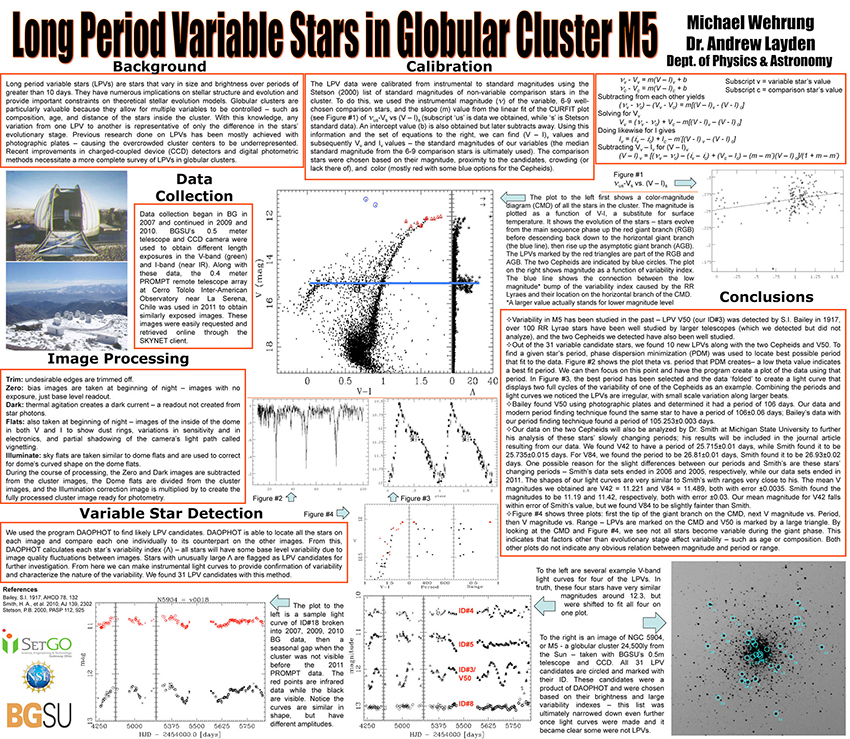Astrophysics


The underlying theme of Dr. Andrew Layden's work is to determine how our Galaxy (the Milky Way) formed. This research has taken several directions:
Studying the motions, positions, and compositions of old stars in the Galaxy.
Studying nearby galaxies to see how they may relate to the Galaxy ( Sagittarius andNGC 5206).
Studying the globular clusters (ancient, massive star clusters) of the Galaxy.
- Developing the tools with which to make these studies possible, including measuringdistances to RR Lyrae variable stars, and the amount of interstellar dust between us and the RR Lyrae stars.

The brightness variations of an RR Lyrae star (right).
Below: Poster of the undergraduate student, Michael Wehrung, who conducted research with Dr. Layden and the SetGO program at BGSU.


Dr. John Laird (retired, Emeritus Professor) uses spectral analysis to determine the chemical composition of stars. He and his collaborators have developed a technique for analyzing very low-quality, noisey spectra, allowing measurements of much fainter and more distant stars than with conventional techniques. More detailed chemical analyses are used to measure individual elements. All of these data are used together to probe the origin of the chemical elements and the history of the Milky Way galaxy.

Updated: 01/12/2022 04:11PM

